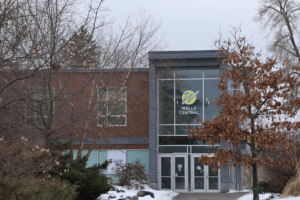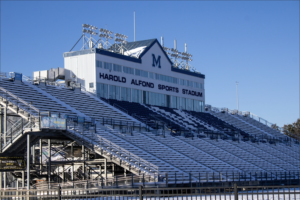Libertarians want to diminish the presence of the state but try to regulate “gay propaganda.” The Liberal Democratic party is made up of militant nationalists whose unwavering target is the restoration of Russian supremacy on Earth. And the communists enjoy a close relationship to the Orthodox Church.
In Russia, the political spectrum as we know it does not exist. In its place is a tangled political web that weaves threads between the congress (Duma), business oligarchs, regional officials and the head of state: Vladimir Putin. With the country gearing up for 2018 elections, now is the perfect time to break down Russia’s complex political dynamics.
The structure
Serving as the main legislative organ of the Russian federal government is the State Duma, the lower house of the Federal Assembly. (Duma comes from the Russian verb “Dumat,” to think. But how much the representatives practice this activity, just as in the U.S. Congress, is up for debate). Representatives — deputies, as they are known in the Russian government — are elected for terms of five years to fill the 450 seats in the Moscow assembly.
The Duma’s main responsibilities are to appoint various high-level government positions and pass laws, known as decrees. Committees formed by the legislative body are charged with drafting legislation to present before the assembly, which must then pass voting by a simple majority to move on to the upper house, the Federal Council.
In the Federal Council things are a bit more tame. While the Duma is prone to raucous debates between opposing parties’ deputies, the Council’s members are forced to keep party affiliations out of official business. Two senators are appointed by regional officials in each of Russia’s 85 provinces for a total of 170 councilors. Despite their geographic spread, coming from all of Russia’s eight time zones, the senators maintain a cohesive partnership with one another.
When proposed legislation is set to benefit the establishment, the council mindset is overwhelmingly monochromatic: pass, pass, pass. Many see the Council’s non-affiliation as a helpful condition to making sure it stays under Putin’s thumb.
The broken spectrum
Back in 2007, in his first presidential term, Putin raised the minimum amount of votes a candidate needed to be elected to the Duma. The jump from 5 percent to 7 percent of the vote may seem small, but it was enough to virtually eliminate small-party candidates from securing seats in the assembly. Considering the seemingly endless waves of parties with conflicting — and sometimes not so conflicting — interests, the move was significant in trying to keep the radical fringe parties from gaining any steam.
In the United States we have two main parties, Democratic and Republican, and a sprinkling of smaller ones that never manage to make a serious contest. In Russia there are over seven parties in the Duma alone. From biggest to smallest they are: United Russia (Putin’s party), the Communist Party, the Liberal Democratic Party (LDP), A Just Russia, the Civic Platform Party, the Motherland-National Patriotic Union and lone independent Vladislav Reznik.
Unlike in the U.S., the lines between these groups are not always so obvious. According to our logic, the notorious leader of LDP, Vladimir Zhirinovsky, should be socially and fiscally progressive, as democrats normally are. But in Russia, a party’s name gives little insight into its platform – LDP is viciously nationalist, seeking to restore Russia to its former glory (Make Russia Great Again, sound familiar?). Zhirinovsky himself has called for Russian reoccupation of former Soviet states.
Despite Western misconceptions of it being authoritarian, Putin’s United Russia Party is actually quite moderate. Its unifying principle is to avoid becoming ideological.
No matter how you cut it, it is impossible to draw a spectrum for political parties in Russia. The country has experienced countless models of development — from imperial to global to communist — that manifest in the current political atlas. The U.S. is simple: we have one system called capitalism and parties to walk different paths toward its ideals. But in Russia, forces pull in every direction to bring the country forward into their vision of the future — their model, whether that is capitalism, socialism or communism.
Russian political handbook, part 1
More from OpinionMore posts in Opinion »



